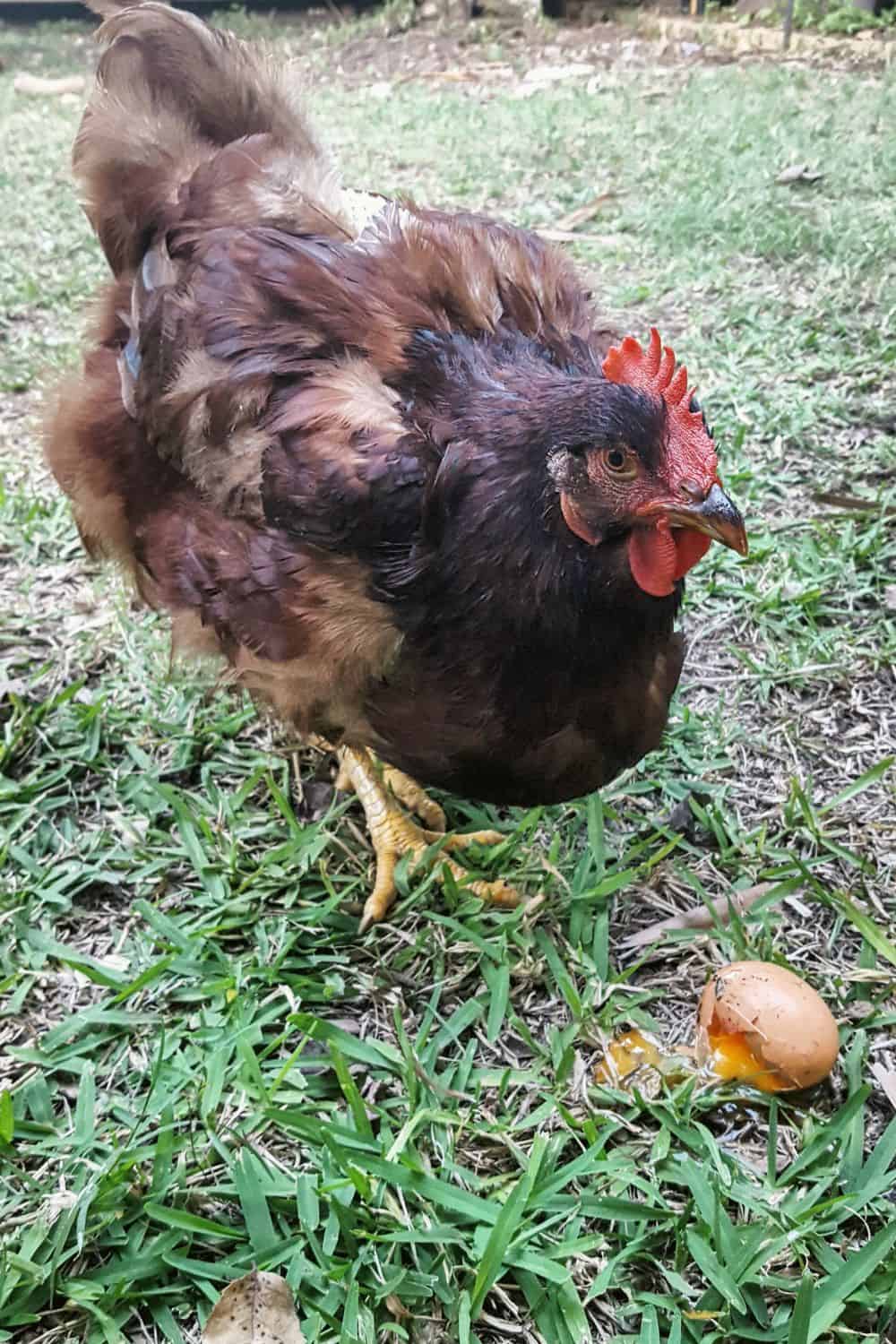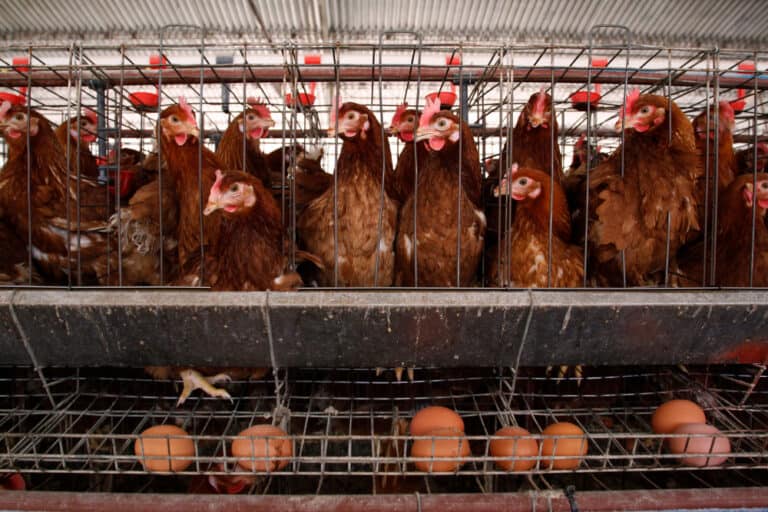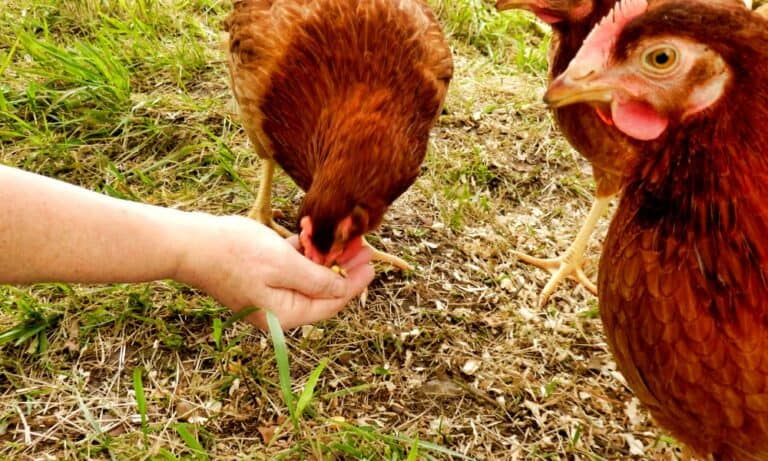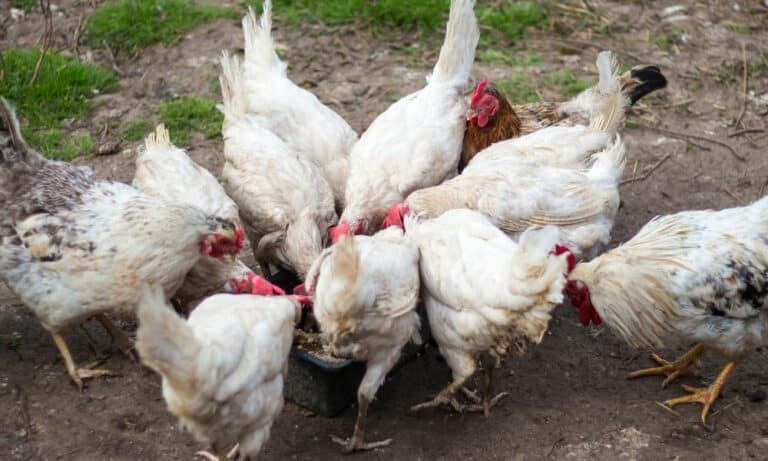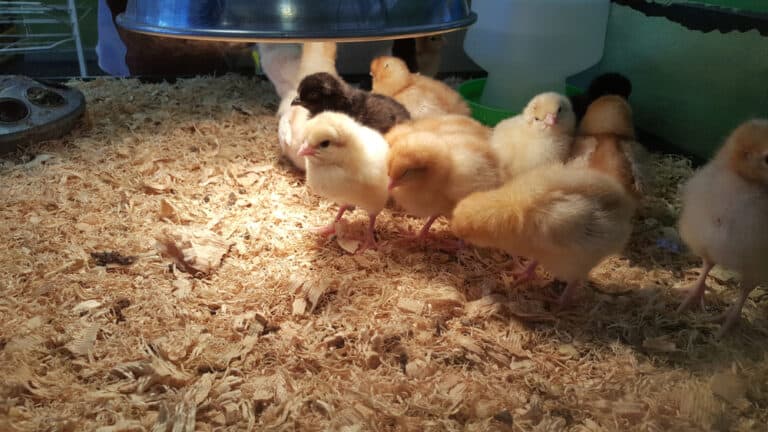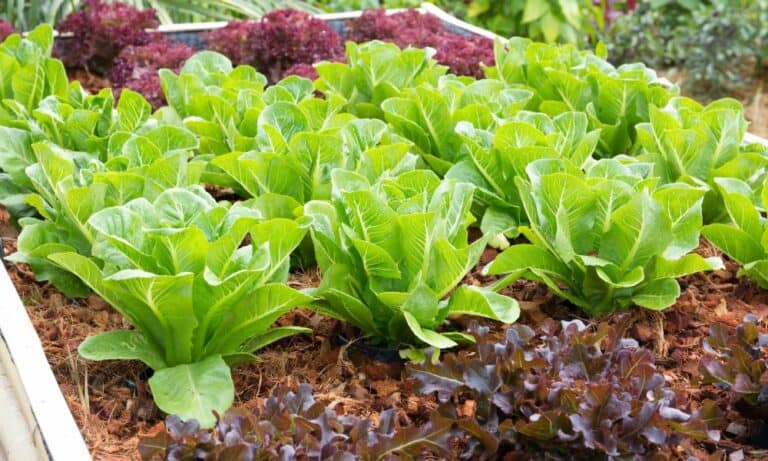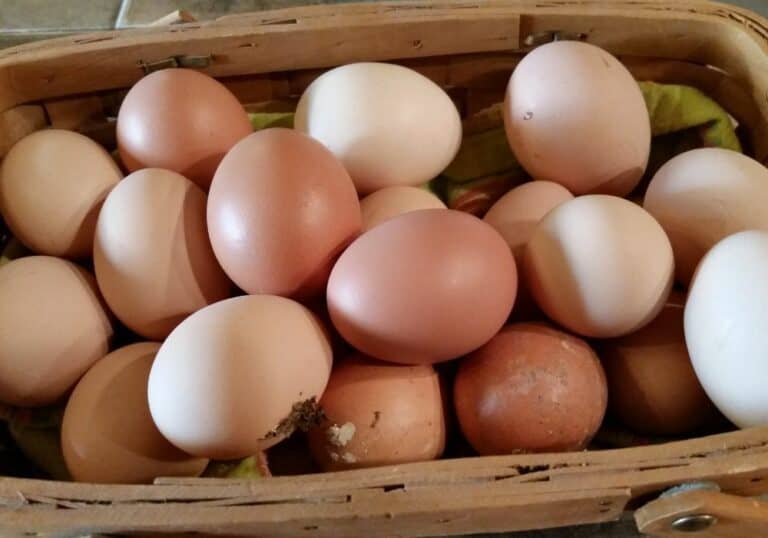Poultry breeders encounter a phenomenon during the fall that can surprise and disturb them if they are beginners. It happens that egg production drops significantly or even stops even though their hens are carriers of good health.
This seasonal process occurs when chickens begin their regular feather change. During this time, laying hens focus all their energy on feather renewal instead of egg production. It is crucial to know when & how long does a chicken molt takes, so you can be prepared on time.
What is Molting?
Chicken molting is a natural annual process in all breeds, regardless of age, color, and sex. It allows them to replace old feathers with new ones to regulate body temperature better, protect the skin, and improve appearance. You can recognize a few molting periods, including:
- The first juvenile (mini) molt starts after 6 to 8 days of hatching
- The second juvenile (mini) molt appears when chicks are 7 to 12 weeks old, allowing males to get recognizable ornamental feathers
- The first annual molt occurs at 14 to 18 months of age and typically lasts 7 to 8 weeks
Even though chickens usually start molting after the first year of life, this time can vary depending on breed, diet, and environment. It usually lasts about two months, but that range significantly varies depending on the breed.
So, you can expect the molt to last a month or to prolong to 12 weeks. It usually occurs in autumn and winter when days become shorter and the temperature drops.
Losing old feathers is always gradual. It starts from the head and neck and ends on the tail. After the old feathers fall out, fluffy, small, and soft new ones grow instead. They become longer, thicker, and more durable during maturation.
Molting can be very stressful for chickens because new feathers’ growth requires a lot of energy. Therefore, you can expect your fowl to become lethargic, lose their appetite, and have reduced egg production during this time. However, they will successfully go through molting with proper attention and care.
1. Natural molting
Be aware that there are two types of natural molting, soft and hard. A soft molt is when your chickens don’t shed a lot of feathers and only look a bit messy and without tails. You can even miss that they change feathers if you have no experience and your eye is untrained.
On the other hand, chickens going through a hard molt remain without a considerable amount of feathers, giving them a bare appearance. Interestingly, the molting style varies and depends on each individual. For instance, the same bird may experience different molt types over the years.
2. Forced molting
So-called forced molting is banned in the European Union, but it is still widespread on commercial egg farms in the US. Egg producers use this unnatural, painful, and entirely inhumane process to induce rapid feather replacement.
Forcing hens to molt by stressing their bodies allows continuing egg laying at the desirable time of the year, usually in autumn. Breeders deprive them of food for a week or two and sometimes keep them without water to achieve that.
Unfortunately, many chickens die during forced molting, particularly those with weakened immune systems. Plus, this can make their eggs susceptible to salmonella.
3. Stress molting
Stress molting is a process that occurs in many bird species when living in inadequate conditions. Several factors cause it in chickens, including:
- Excessive cold and heat
- The artificial light’s reduction and natural decrease in the daylight
- Irregular and insufficient feeding followed by weight loss
- Lack of water and necessary nutrients in their diet
- Infections and internal parasites
- Exposure to predators
- Extended nesting
- Overcrowding and improper ventilation
- Moving to another coop
When chickens are under the stressor influence, they produce stress hormones like cortisol, causing feather shedding. If that happens, you will notice chickens look messy and can sometimes become bald.
Remember that molting is often an energy-intensive process, resulting in weight loss and temporary egg production dropping. Providing your chickens with a stress-free environment and adequate nutrition in such situations is crucial to minimize the stress impact.
4. Vacation molting
Sometimes chickens can stop producing eggs in spring or summer while losing one or two primary feathers. After that, they stop molting and continue with regular production.
This phenomenon is known as vacation molting or some kind of introductory process before feather loss in the fall. Rejecting other primary feathers in a row comes before a cold period of the year when chickens complete their regular molting.
5. Partial (neck) molting
Chickens sometimes experience so-called partial molt without stopping egg production. For instance, you can notice that some hens in the flock constantly get new feathers. Unfortunately, it is a sign that they are poor egg producers, and removing them from the flock is advisable.
When Do Chickens Molt?
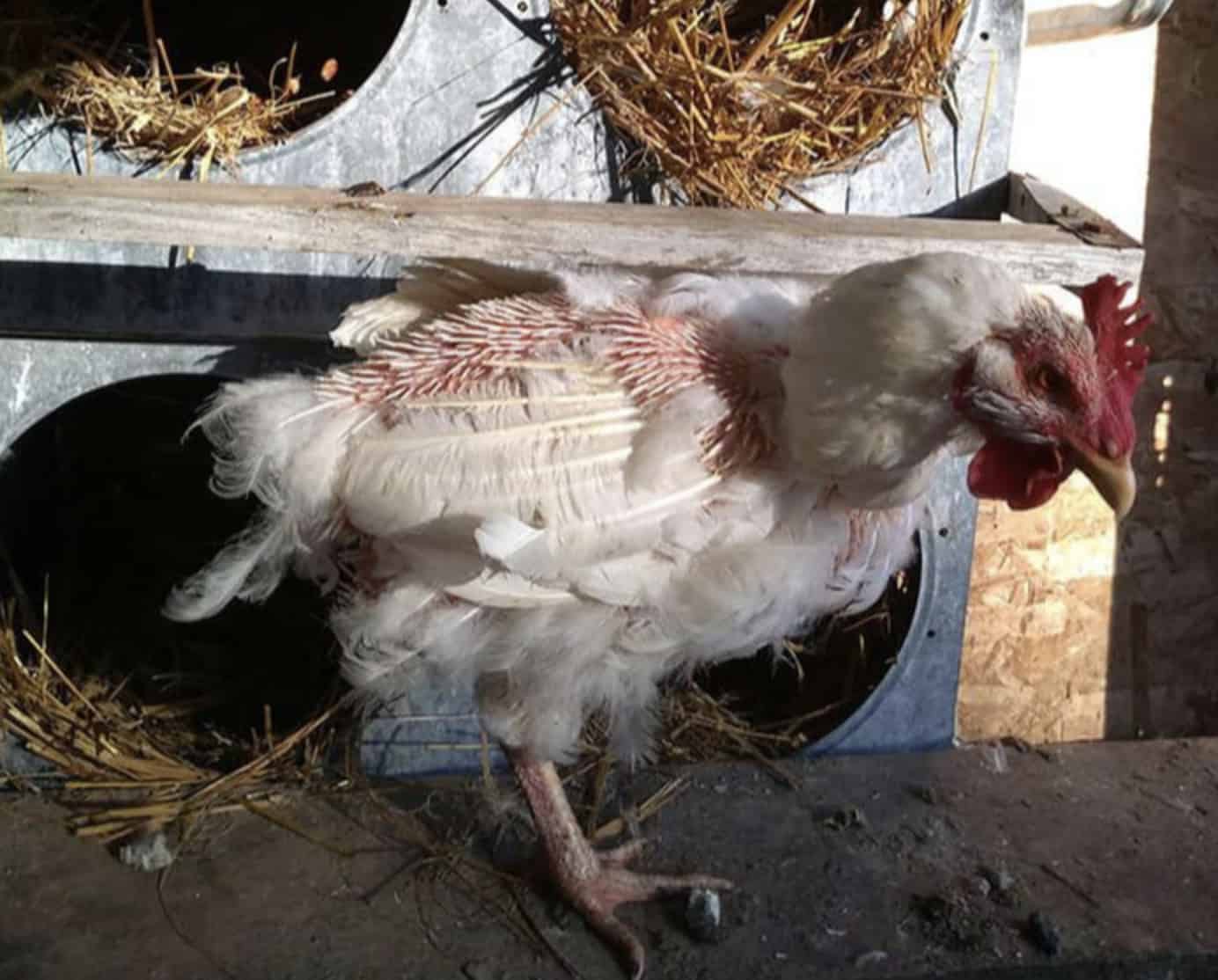
As I have already mentioned, chickens go through several molts during their lifetime. The first juvenile (mini) molt occurs when chicks are only six to eight days old. It is a period when they start losing their down feathers.
The second juvenile molt occurs at about 7 to 12 weeks of chicks age when they entirely shed their baby feathers. It is a time when their regular feathers begin to grow, and the first decorative feathers appear in males.
Chickens experience their first adult molt after reaching 14 to 18 months of age. The shorter daylight triggers molting and encourages adult hens to begin the process in late summer or fall.
You can expect them to get new plumage within two to three months when more feathers occur on the ground than usual. Some breeders believe that hens changing feathers more quickly are better egg layers.
How Long Do Chickens Molt?
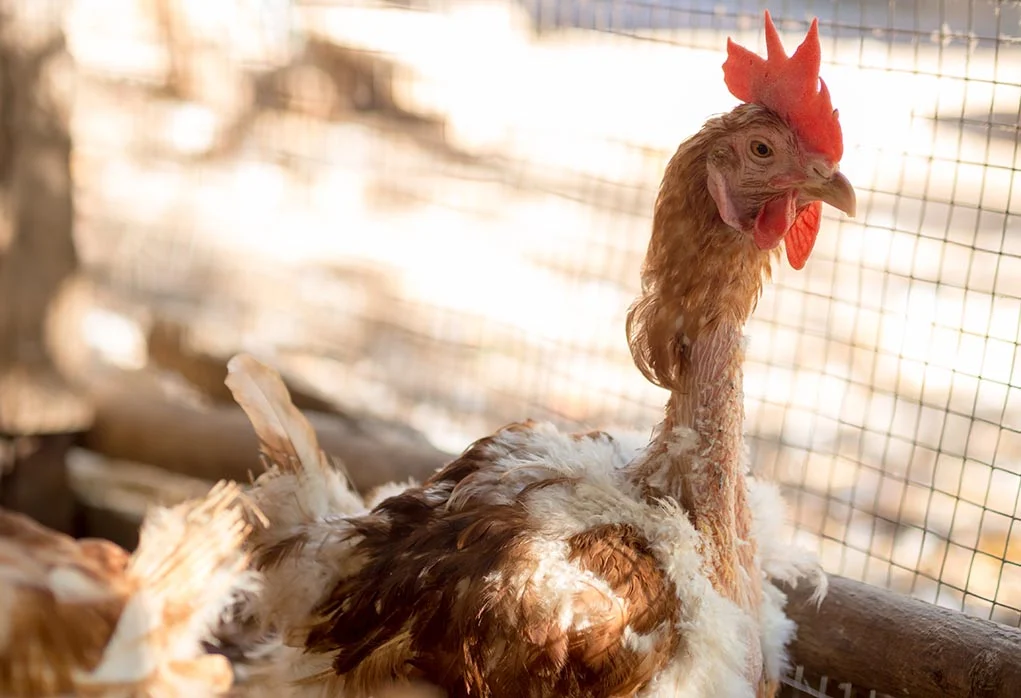
Many factors affect the chicken molt length, including breed, age, living conditions, and diet. Some chickens lose plumage for several weeks, while the process can take two to three months for others.
By careful observation, you can see that molting occurs in a specific order, often after feathers lose shine and become dull. Chickens always lose feathers on the head and neck first. Only then does the process spread to their chest, back, wings, and tails.
One of the indicators of how long a hen will molt is the way of its primary feathers replacement. Chickens have ten stiff primary feathers on each wing and lose them in about two weeks. After that, new ones take about six weeks to regrow.
Slow-molting hens (late molters) shed their primary feathers in a precisely established order, one at a time. On the other hand, fast-molting hens (early molters) lose those primary feathers in groups and get new quicker.
The rule of thumb is that younger hens molt faster than older ones. Additionally, feather replacement last longer in chickens with heavy molt.
Ways to Take Care of Chickens During Molting
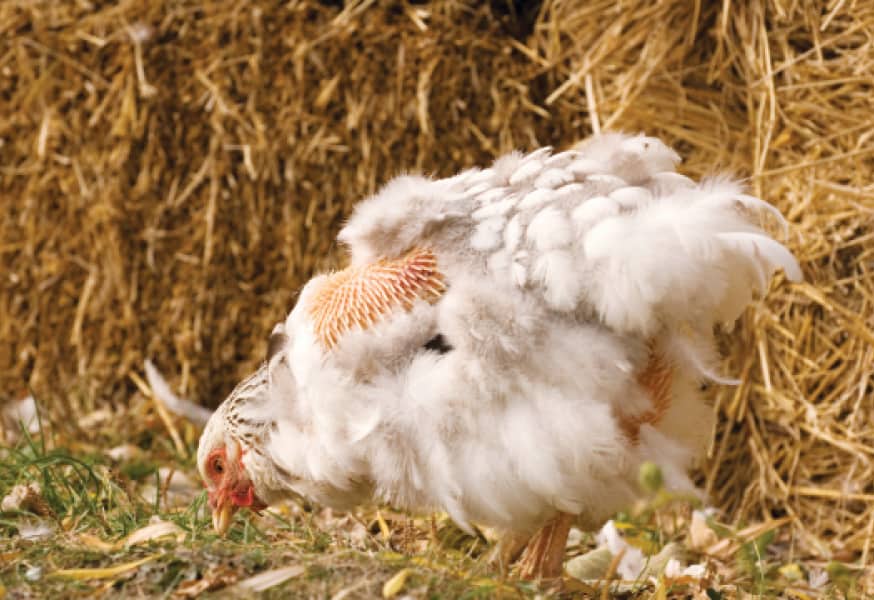
Although shedding is a natural process, you should consider a few things crucial for chickens in that period. Your goal is to help them go through the process as painlessly as possible.
1. High protein feed
A protein-rich food is one of the best solutions for your chickens to get through this stressful period easier. It is crucial since approximately 85% of their feathers are keratin, which is, chemically speaking, a protein.
The typical high-quality chicken feed contains about 16% protein. However, you should increase that percentage to 18% or even 20% during molting.
Another option is to provide them with healthy protein snacks, like black fly larvae, which are rich in protein. A few coats of these larvae are enough to ensure the healthy production of new feathers.
Adding sunflower seeds and grains as healthy protein snacks is also an excellent option. Some breeders add scrambled eggs to their flock’s diet, so you can also try this method.
2. Reduce stress
Be aware that molting is hard for chickens, so you should give your best to eliminate or at least reduce potentially stressful situations during that period. It is the best way to help your flock overcome this unpleasant process more quickly and painlessly.
For instance, avoid changes in routine during that period and never introduce new individuals into an already-formed flock until the feather replacement is over.
3. Avoid handling
Chickens’ skin is more sensitive and sometimes painful during molting, so reducing handling to a minimum is preferable and even necessary. It is also a way to prevent skin damage and possible infections by preventing bacteria from transferring.
4. Clean and insulate the coop
Chickens lose significant amounts of feathers during molting, so their regular removal makes the coop comfortable and hygienically safe. Likewise, everyday maintenance minimizes the risk of disease transmission and contamination. Provide deep and clean bedding and plenty of fresh air but without drafts.
Summary
Chickens experience molting several times throughout their lives. It is an unpleasant experience for both birds and breeders, although it is an entirely natural process.
To make the situation easier and less painful for your fowl, provide them with nutritious feed and a clean coop. Besides, eliminate or reduce stressors and keep changes in their routine to a minimum until the process is complete.

